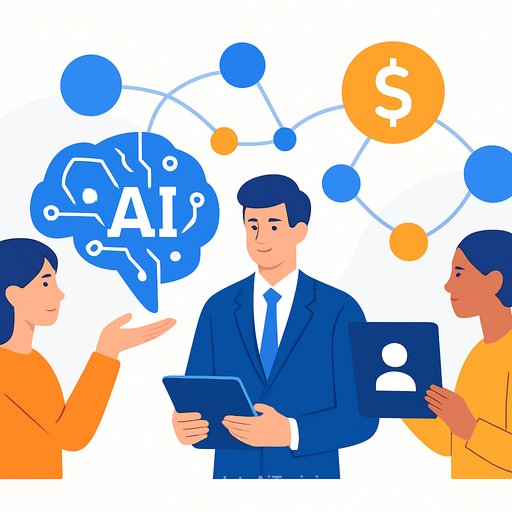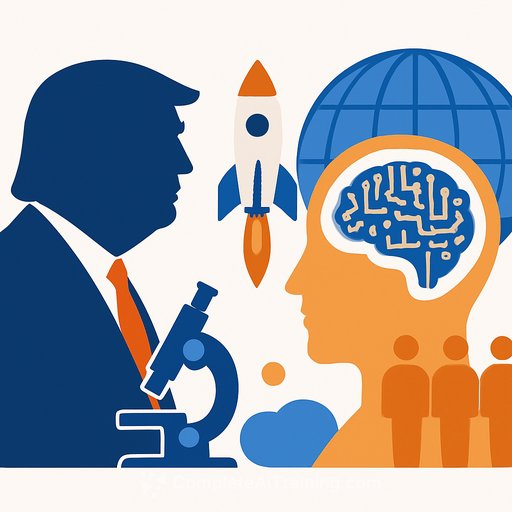Genesis Mission brings Bay Area national labs together to accelerate AI-driven science
Three Bay Area national laboratories-Lawrence Livermore National Laboratory (LLNL), Lawrence Berkeley National Laboratory (LBNL), and SLAC National Accelerator Laboratory-will participate in the Genesis Mission, a U.S. Department of Energy program to speed scientific discovery with AI. President Donald Trump signed an executive order Monday establishing the initiative, which will integrate datasets from all 17 national labs into a shared AI platform. The goal: test hypotheses faster, automate research workflows, and shorten the path from idea to result.
Chris Tassone, associate lab director of energy sciences at SLAC, said the effort builds on a decade of work applying AI to science at the labs. SLAC's experiments generate some of the largest particle and electron datasets on Earth. Feeding those data streams into a common platform could speed up analysis and model development across many fields, he noted.
Jonathan Carter, associate lab director of computing sciences at LBNL, expects the coordinated push to lift national research productivity. Instead of models trained mainly on text, Berkeley Lab is focused on AI that learns from scientific images, geospatial measurements, and molecular structures. The lab brings both breadth of data-genomics, X-ray diffraction, and more-and the compute needed to train large models at scale.
At LLNL, Brian Spears, director of the AI Innovation Incubator and technical director for Genesis Mission, called the program a long-sought step. He pointed to the lab's track record in supercomputing, scientific code development, and data-driven decision support for high-consequence problems, including national security and energy. Those teams are already applying AI to complex scientific challenges and will help shape the platform.
What the integrated platform means for researchers
For scientists, Genesis is about practical acceleration. With multi-modal data from 17 labs and shared infrastructure, teams can build models that link instruments, simulations, and theory-then push those models into experiment planning and automated workflows.
- Multi-modal training across images, spectra, time series, simulations, and text-like lab notes.
- Automated experiment loops: active learning, fast surrogate models, and physics-informed ML to guide next steps.
- Standardized data pipelines, provenance, and reproducibility across facilities.
- Secure access patterns that respect export controls and mission constraints.
- HPC-native scaling for training and inference, from edge instruments to supercomputers.
Early focus areas
- Particle and accelerator science: faster event classification and anomaly detection on extreme-scale streams.
- Materials and chemistry: inverse design, structure-property prediction, and rapid screening.
- Structural biology: AI-assisted interpretation of X-ray diffraction and cryo-EM data.
- Genomics and bioenergy: sequence-to-function modeling and experiment prioritization.
- Energy systems and climate: geospatial modeling, forecasting, and control.
The U.S. Department of Energy is coordinating the mission across its national laboratories. Details will evolve as the platform is scoped and built in phases. Learn more about DOE programs at energy.gov.
How lab teams can prepare now
- Curate high-value datasets with rich metadata; adopt FAIR data practices.
- Containerize analysis and simulation codes; add unit tests and CI to enable reproducible pipelines.
- Instrument workflows for provenance (datasets, parameters, model versions, environment).
- Prioritize 2-3 use cases where AI can cut cycle time by 10-50% within 6-12 months.
- Allocate budget for GPUs and storage close to instruments; plan for data movement and caching.
- Upskill researchers on ML for scientific data and MLOps fundamentals.
- Coordinate early with data stewards, security, and export control offices.
- Define clear success metrics: accuracy, wall-clock time saved, cost per experiment, uncertainty bounds.
For teams building skills around scientific AI workflows, see training options by role at Complete AI Training.
As Spears put it, the aim is straightforward: build a system that learns, adapts, and delivers results fast enough to give the United States an advantage in science and national security-and do it on a tight timeline.
Your membership also unlocks:





